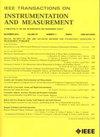An Iterative Vibration Sensor for Detecting Local Transfer Path Variations in Mechanical Structures
IF 5.6
2区 工程技术
Q1 ENGINEERING, ELECTRICAL & ELECTRONIC
IEEE Transactions on Instrumentation and Measurement
Pub Date : 2025-01-24
DOI:10.1109/TIM.2025.3533627
引用次数: 0
Abstract
Multipath problems in complex structures continue to place limitations on local damage detection among common vibration-based nondestructive detection methods. An interactive vibration sensor based on time reversal (TR) technique for mechanical fatigue detection is proposed. The vibration sensor consists of an exciter for vibration generating and a receiver for picking-up the multipath transferred vibration signal. The exciter initially generates vibration with a chirp signal on the object structure and the receiver captures the reverberated signal. The time-reversed signal is then reconstructed and reemitted by the exciter to complete one iterative sensing cycle. It is found that the energy focusing effect of the TR technique can be used as an indicator for detecting local damages in mechanical structures. A stainless-steel flat plate and a three-story frame are taken as two typical objects for proof-of-concept experiments. Mechanical fatigues are simulated by attaching a mass block on the flat plate and changing the tighten torque of the connection bolts in the frame. The peak values and the symmetry of the focused waveforms decrease while transfer paths change with the simulated fatigues, suggesting the ability of the proposed technique in detecting the existence of local damages of the structure and its approximate location. In addition, robustness test results show that such a method performs good anti-interference ability against background vibration and weakly coupled loads.求助全文
约1分钟内获得全文
求助全文
来源期刊

IEEE Transactions on Instrumentation and Measurement
工程技术-工程:电子与电气
CiteScore
9.00
自引率
23.20%
发文量
1294
审稿时长
3.9 months
期刊介绍:
Papers are sought that address innovative solutions to the development and use of electrical and electronic instruments and equipment to measure, monitor and/or record physical phenomena for the purpose of advancing measurement science, methods, functionality and applications. The scope of these papers may encompass: (1) theory, methodology, and practice of measurement; (2) design, development and evaluation of instrumentation and measurement systems and components used in generating, acquiring, conditioning and processing signals; (3) analysis, representation, display, and preservation of the information obtained from a set of measurements; and (4) scientific and technical support to establishment and maintenance of technical standards in the field of Instrumentation and Measurement.
 求助内容:
求助内容: 应助结果提醒方式:
应助结果提醒方式:


